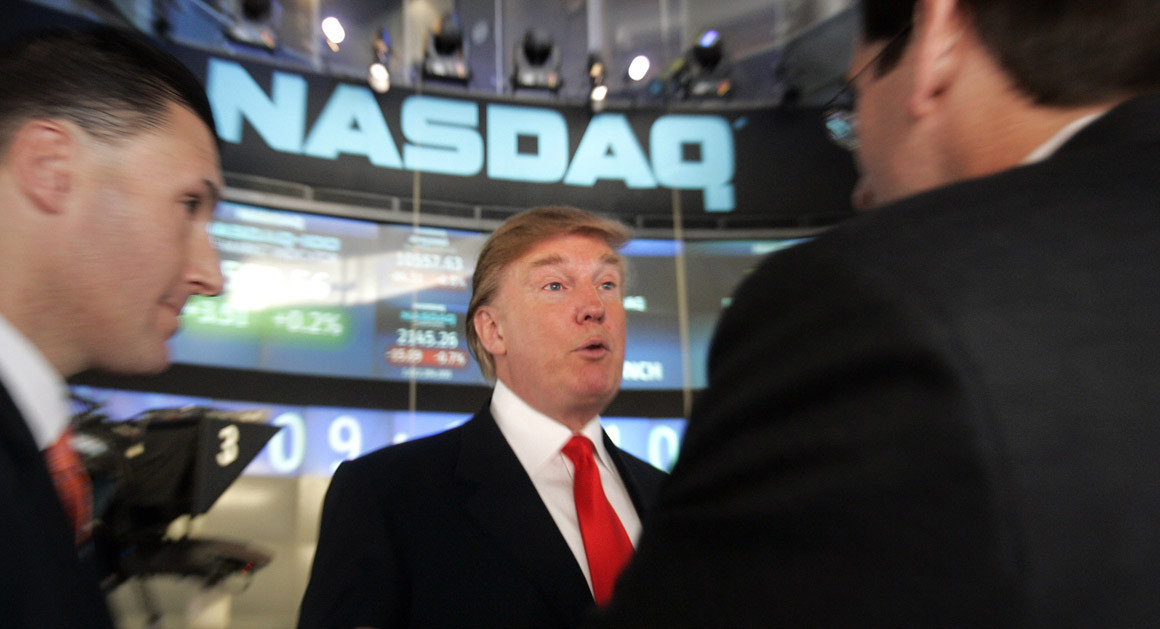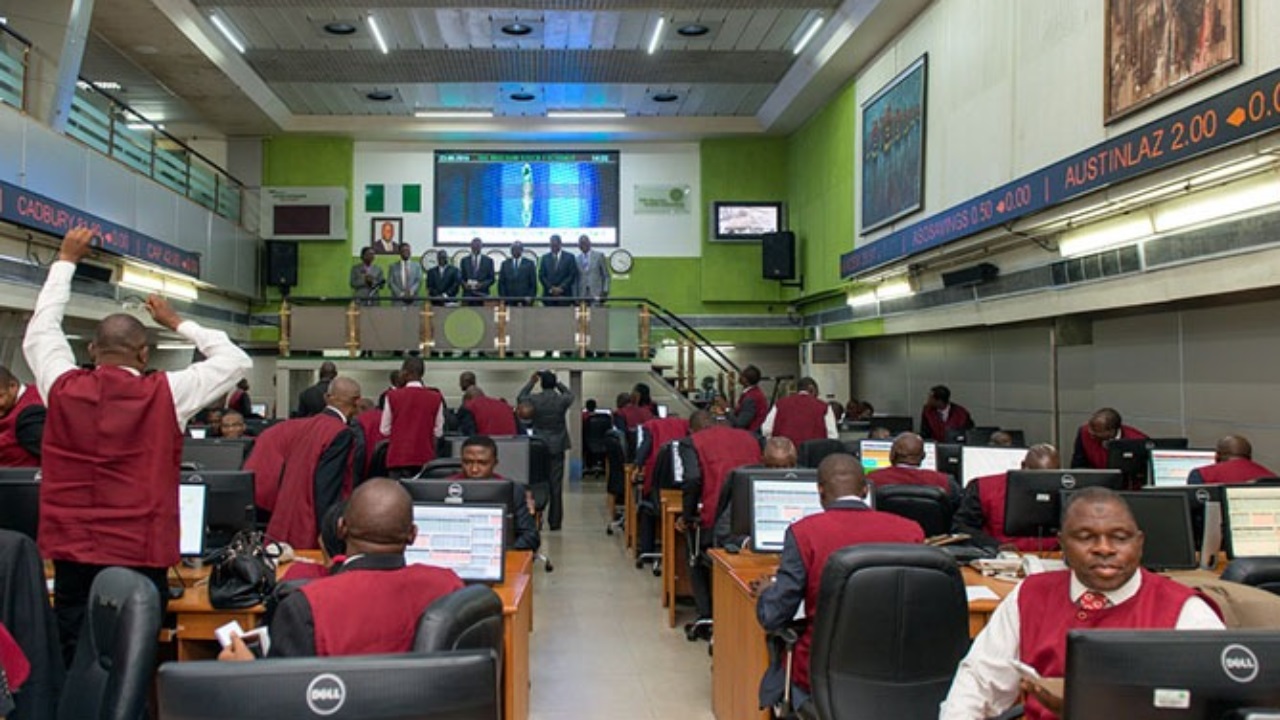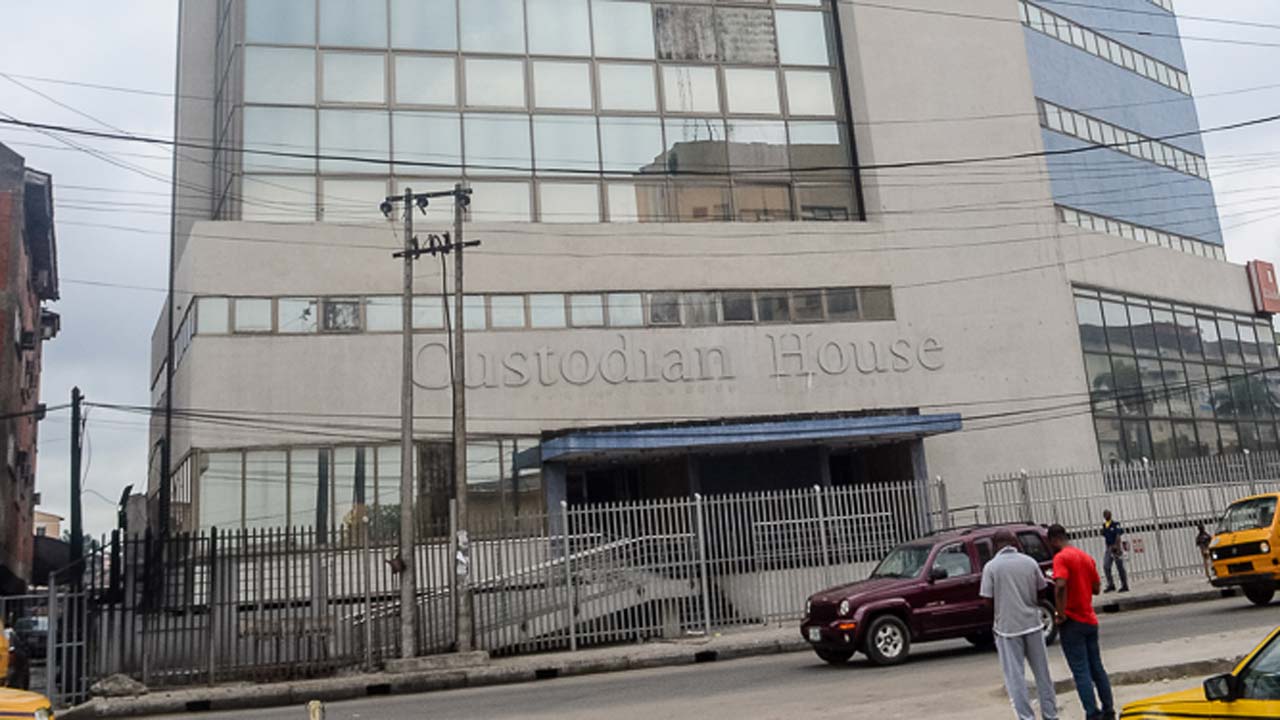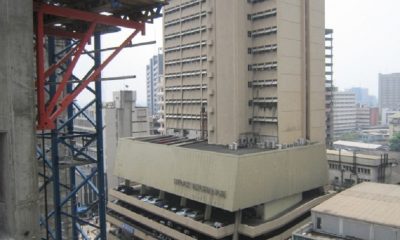Economy
Upbeat Jobs Data May Add To Interest Rate Concerns

By Investors Hub
The major U.S. index futures are pointing to a lower opening on Friday, with stocks likely to come under pressure following the mixed performance seen in the previous session.
Concerns about higher interest rates may weigh on Wall Street after the Labor Department released a report showing stronger than expected job growth and a jump in wages.
“Given companies such as WalMart have credited Trump’s tax cuts as a way for them to afford higher worker pay we suspect we will see the wage numbers pick-up further,” said James Knightley, Chief International Economist at ING.
He added, “Consequently, it will need a big shock to prevent the Fed from hiking in March, but it could happen in the form of a damaging government shutdown should politicians fail to resolve their differences.”
Following the modest rebound seen on Wednesday, stocks showed a lack of direction over the course of the trading day on Thursday. The major averages spent much of the day bouncing back and forth across the unchanged line.
Eventually, the major averages ended the session mixed. While the Dow inched up 37.32 points or 0.1 percent to 26,186.71, the Nasdaq fell 25.62 points or 0.4 percent to 7,385.86 and the S&P 500 edged down 1.83 points or 0.1 percent to 2,821.98.
The choppy trading on Wall Street came as traders seemed reluctant to make significant moves ahead of the release of the closely watched monthly jobs report.
Earnings reports due after the close of trading from Google parent Alphabet (GOOGL), Amazon (AMZN) and Apple (AAPL) may also have kept traders on the sidelines.
On the U.S. economic front, a report released by the Labor Department unexpectedly showed a modest decrease in labor productivity in the fourth quarter, although the report also showed a sharp jump in labor costs.
The report said labor productivity edged down by 0.1 percent in the fourth quarter after surging up by a revised 2.7 percent in the third quarter. Economists had expected productivity to climb by 1.0 percent.
Meanwhile, the Labor Department said unit labor costs spiked by 2.0 percent in the fourth quarter after slipping by a revised 0.1 percent in the third quarter. Labor costs were expected to increase by 0.8 percent.
A separate report from the Labor Department showed a slight drop in first-time claims for U.S. unemployment benefits in the week ended January 27th.
The report said initial jobless claims edged down to 230,000, a decrease of 1,000 from the previous week’s revised level of 231,000. Economists had expected jobless claims to rise to 238,000.
The Institute for Supply Management also released a report showing a modest slowdown in the pace of growth in manufacturing activity in the month of January.
The ISM said its purchasing managers index edged down to 59.1 in January from 59.3 in December, although a reading above 50 still indicates growth in the manufacturing sector. Economists had expected the index to dip to 58.8.
Commercial real estate stocks showed a significant move to the downside on the day, resulting in a 2.2 percent slump by the Morgan Stanley REIT Index. With the drop, the index ended the session at its lowest closing level in over a year.
The weakness in the commercial real estate sector likely reflected concerns about the impact of higher interest rates.
Considerable weakness also emerged among retail stocks, as reflected by the 1.7 percent loss posted by the Dow Jones Retail Index.
Alibaba (BABA) posted a steep loss after the China-based online retail giant reported fiscal third quarter earnings that missed expectations.
Utilities and chemical stocks also moved notably lower, while substantial strength was visible among oil service and brokerage stocks.
Economy
Geo-Fluids Seeks Approval to Raise Share Capital to N25bn

By Aduragbemi Omiyale
One of the players in the hydrocarbon business in Nigeria, Geo-Fluids Plc, which trades its securities on the NASD OTC Securities Exchange, is planning to restructure its share capital with an increased of about 1,090 per cent.
Next Monday, the company will hold its Annual General Meeting (AGM) and one of the resolutions to be tabled to shareholders by the board is an authorisation for raising the share capital from N2.1 billion to N25.0 billion.
This is to be achieved by creating an additional 45,742,332,488 ordinary shares of 50 kobo each, each ranking pari passu in all respects with the existing ordinary shares of the firm.
Funds from this action would be used to expand the business scope to include hydrocarbons, mining, and natural resource development.
“That the share capital of the company be and is hereby increased from N2,128,833,756 to N25,000,000,000 ordinary shares of 50 kobo each, each ranking pari passu in all respects with the existing ordinary shares of the company,” a part of the resolutions read.
In addition, Geo-Fluids wants approval, “To undertake the business of bitumen production and processing in all its forms, including but not limited to the exploration, prospecting, drilling, extraction, refining, treatment, blending, storage, packaging, distribution, marketing, importation, exportation, shipping, transportation, trading, and general supply of bitumen, its derivatives, by-products, and ancillary materials; and to carry on all other related or incidental undertakings, services, or operations that may be considered advantageous, beneficial, or necessary for the advancement, expansion, or diversification of the bitumen industry.”
Also, it wants the authority of shareholders, “To engage in the acquisition, development, and management of mining assets and concessions for the purpose of exploring, extracting, processing, and producing hydrocarbons, oil and gas, minerals, and other natural resources; and to develop, mine, and process coal, industrial minerals, and other raw materials required for industrial, commercial, energy, or infrastructural purposes, together with all related activities necessary to ensure the effective exploitation, utilisation, and commercialisation of such resources.”
Further, it wants, “To operate and participate in all segments of the oil and gas value chain, including but not limited to the exploration, prospecting, drilling, extraction, refining, processing, storage, blending, supply, marketing, distribution, importation, exportation, transportation, shipping, and trading of crude oil, refined petroleum products, petrochemicals, liquefied natural gas, compressed natural gas, and other related hydrocarbons and derivatives; and to establish, own, operate, or participate in facilities, ventures, or partnerships that advance the energy and petroleum sector.”
At the forthcoming meeting, the organisation wants its name changed from Geo-Fluids Plc to The Geo-Fluids Group Plc.
Economy
PENGASSAN Kicks Against Full Privatisation of Refineries

By Adedapo Adesanya
The Petroleum and Natural Gas Senior Staff Association of Nigeria (PENGASSAN) has warned against the full privatisation of the country’s government-owned refineries.
Recall that the Nigerian National Petroleum Company (NNPC) is putting in place mechanisms to sell the moribund refineries in Port Harcourt, Warri, and Kaduna.
However, this has met fresh resistance, with the President of PENGASSAN, Mr Festus Osifo, saying selling a 100 per cent stake would mean the government losing total control of the refineries, a situation he warned would be detrimental to Nigeria’s energy security.
Mr Osifo said the union was advocating the sale of about 51 per cent of the government’s stake while retaining 49 per cent, which he described as being more beneficial to Nigerians.
“PENGASSAN, even before the time of Comrade Peter Esele, had been advocating that government should sell its shares. The reason why we don’t want government to sell it 100 per cent to private investors is because of the issue bordering on energy security,” he said on Channels Television, late on Sunday.
“So, what we have advocated is what I have said earlier. If government sells 51 per cent stake in the refinery, what is going to happen? They will lose control, so that is actually selling. But for the benefit of Nigerians, retain 49 per cent of it.“
The PENGASSAN leader maintained that if the government had heeded the union’s advice in the past, the oil industry would be in a better state than it is today.
He addressed concerns in some quarters over whether investors would be willing to buy stakes in government-owned refineries, insisting that there are investors who would be interested.
“Yes, there are investors who surely will be willing to buy a stake in the refinery because our population in Nigeria is quite huge, and those refineries, when well maintained without political pressures and political interference, will work,” he said.
However, Mr Osifo warned that even if the government decides to sell a 51 per cent stake, it must ensure that a complete valuation is carried out to avoid selling the refineries cheaply.
Economy
SEC Gives Capital Market Operators Deadline to Renew Registration

By Aduragbemi Omiyale
Capital market operators have been given a deadline by the Securities and Exchange Commission (SEC) for the renewal of their registration.
A statement from the regulator said CMOs have till Saturday, January 31, 2026, to renew their registration, and to make the process seamless, an electronic receipt and processing of applications would commence in the first quarter of 2026.
“These initiatives reflect our commitment to leveraging technology for faster, more transparent, and efficient regulatory processes.
“The commission is taking deliberate steps to make regulatory processes faster, more transparent, and technology-driven. We are investing in automation, database-supervision, and secure infrastructure to improve how we interact with the market,” the Director General of SEC, Mr Emomotimi Agama, was quoted as saying in the statement during an interview in Abuja over the weekend.
He noted that through the digital transformation portal, the organisation has automated registration and licensing end-to-end as operators can now submit applications, upload documents, and track approvals online, cutting down manual processing time and reducing the need for physical visits.
According to him, the agency has also rolled out the Commercial Paper issuance module, which allows operators to file documents, monitor progress, and receive approvals electronically while feedback from early users shows a clear improvement in turnaround time.
“Work is ongoing to automate quarterly and annual returns submissions, with structured templates and system checks to ensure accuracy. A returns analytics dashboard is also in development to support risk based supervision and exception reporting.
“To back these changes, we have started upgrading our IT infrastructure, servers, storage, networks, and security layers, to boost speed and reliability.
“Selective cloud migration is underway for platforms that need scalability and external access, while core internal systems remain on premisev5p for now as we assess security and cost implications.
“At the same time, we are strengthening data integrity and cybersecurity with vulnerability assessments and planned penetration testing once automation and migration phases are stable.
“These efforts show our commitment to building a modern, resilient regulatory environment that supports efficiency, investor confidence, and market stability,” he stated.
Mr Agama affirmed that the nation’s capital market was clearly on a path toward digital transformation adding that there is an urgent need for regulatory clarity on advanced technologies, targeted support for smaller firms, and capacity-building initiatives.
“A phased and proportionate approach to regulating emerging technologies such as AI is essential, complemented by internal readiness through supervisory technology tools.
“Furthermore, investor education, particularly among younger demographics, will be critical to future-proof participation and drive fintech adoption.
“Innovation is vital, but it must be accompanied by responsibility. As operators embrace automation, artificial intelligence, and data-driven tools, they bear a duty to ensure ethical, secure, and compliant deployment. Safeguarding investor data, preventing market abuse, and maintaining operational resilience are non-negotiable,” he declared.
The SEC DG said that ultimately, responsible technology adoption is about building trust, the cornerstone of our markets saying that trust thrives on fairness, transparency, accountability, and regulatory compliance.
He, therefore, urged operators to uphold these principles adding that it will not only protect investors and systemic stability but also strengthen the long-term credibility and competitiveness of the Nigerian capital market.
-

 Feature/OPED6 years ago
Feature/OPED6 years agoDavos was Different this year
-
Travel/Tourism9 years ago
Lagos Seals Western Lodge Hotel In Ikorodu
-

 Showbiz3 years ago
Showbiz3 years agoEstranged Lover Releases Videos of Empress Njamah Bathing
-

 Banking7 years ago
Banking7 years agoSort Codes of GTBank Branches in Nigeria
-

 Economy3 years ago
Economy3 years agoSubsidy Removal: CNG at N130 Per Litre Cheaper Than Petrol—IPMAN
-

 Banking3 years ago
Banking3 years agoFirst Bank Announces Planned Downtime
-

 Banking3 years ago
Banking3 years agoSort Codes of UBA Branches in Nigeria
-

 Sports3 years ago
Sports3 years agoHighest Paid Nigerian Footballer – How Much Do Nigerian Footballers Earn





















